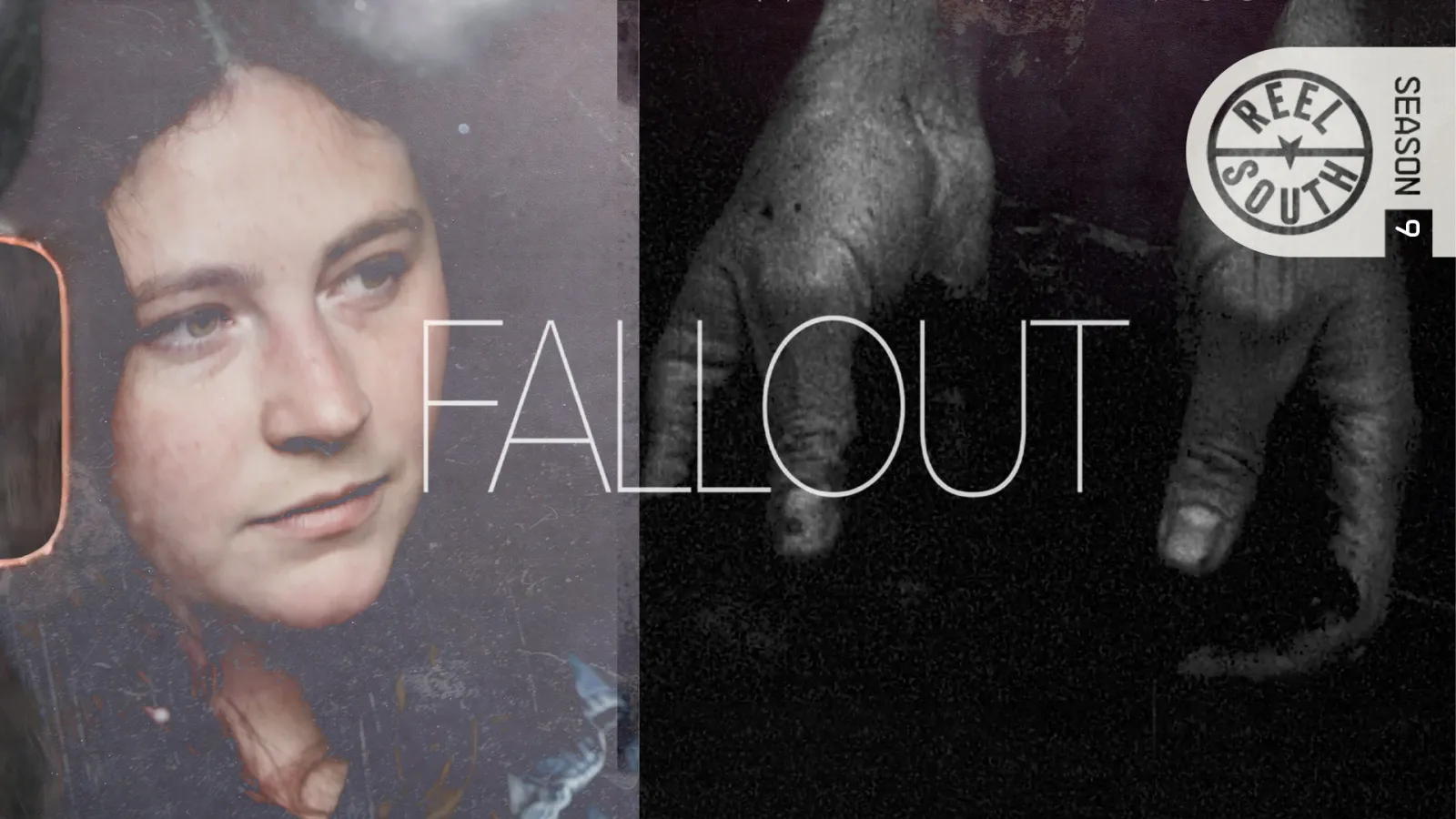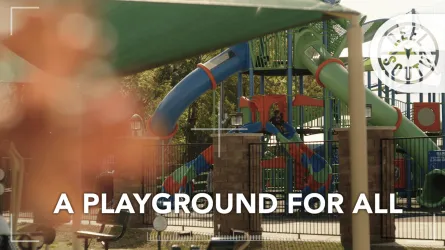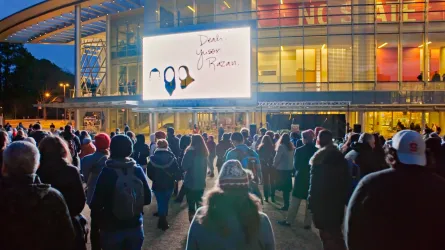Season 9 Episode 3 consists of four short films, including Madison Hill's "Fallout." Her film is about three community members in a rural Appalachian town as they experience illnesses after exposure to contamination from a nearby US Army Ammunition Plant. Due to the open burning of waste, the facility is considered the largest polluter in Virginia, releasing millions of pounds of toxic pollutants into the air, soil, and water each year. The film incorporates contaminants from the facility into 1200 feet of 16mm film. Watch Madison Hill's film from Virginia on PBS today.
Before the Reel South premiere of her film, digital producer Heather Nunerley connected with Madison to learn more about the details of the creation of "Fallout."
This interview has been edited and condensed for clarity.
Heather: How did you decide to make this film?
Madison: I went to college at Virginia Tech which sits just a few miles away from the facility featured in Fallout. While I was in school, I was making documentaries however my projects were mostly focused on natural gas fracking in Central Appalachia. It wasn’t until I left the area but stayed in touch with friends that I began learning about the environmental contamination from the Radford Arsenal. I reached out to Alyssa Carpenter, who is a friend of mine from school, to see if we could coordinate a project like this. Alyssa has dedicated the past few years to organizing around this issue after being diagnosed with thyroid disease in her twenties. Alyssa still lives in the area, and I am in Durham about three hours away, so a few times a month I would drive to the New River Valley to film and connect with people affected by the facility. The location and timing were right, and from my first phone call with Alyssa, it felt like the perfect collaboration.
Heather: What do you hope the viewers of Reel South and PBS take away from your film?
Madison: First and foremost, I want us all to be aware of what the military is doing on our own soil. The Department of Defense has now closed most burn pits overseas after acknowledging its connection to potential long-term health effects.1 They even expanded healthcare benefits for those who were affected by these facilities while on duty.2 Why are they still operating them here? Furthermore, I want viewers to begin questioning this idea of fallout. While working on the documentary, I hand-processed 16mm film with contaminants from the facility including components of chloroform, dioxins, sulfuric acid, and ammonia. The emulsion of the film is made from gelatin, so it is a reactive and organic substance, like the human body. When beginning this project, I realized it would be difficult to make invisible contamination visible to my viewers. I turned to film to showcase the effects of exposure, and, more specifically, exposure that is mostly unseen by us. This project has changed my perspective on a lot of things and has made me more aware of my actions in my daily life. Will I swim in that river with my friends? Will I use pesticides in my garden? Will I rent that apartment down the road from an industrial plant? Of course, some of us don’t have the privilege of eating more expensive produce or living in a different location. However, I think an individual awareness of the potential ways in which we are experiencing fallout in our daily lives is the first step to creating a healthier and more livable world for all of us.
Heather: What has the reaction been since the release of Fallout?
Madison: I have had a full spectrum of responses throughout the production and release of Fallout. While working on this project, I encountered too many people who had experienced the same thing. I spoke to someone who had his thyroid removed after exposure to fallout in the Pacific from the military’s nuclear tests. On another occasion, a friend told me she was diagnosed with thyroid disease when she was 21 after exposure to a facility located in her childhood neighborhood in McAllen, Texas. The list goes on and on… While it was heartbreaking to hear story after story, it was validating for me and I’m sure Alyssa, too. It no longer felt like a lonely issue that this community was facing, but, rather, there was a community and network of support that was out there—we just needed to find them.
On the other hand, once Fallout was released, I had audiences who were absolutely shocked that this was happening. Alyssa once referred to the facility as Radford’s “most well-known secret” and I believe it. I think there’s this sense of betrayal a lot of people feel. The military is in theory supposed to “protect us” yet there is a facility burning heavy metals and toxic chemicals down the road from elementary schools, two major universities, and bustling communities.3
Heather: What were the parts you wished you could have included in Fallout? Or were there any moments you didn't have on film that you wish you captured?
Madison: This issue is so complex and multifaceted, and I was only able to capture a few stories. The facility is located near several elementary schools and many people I spoke to were outraged about this above all else.4 Connected to this issue is the fear many community members have regarding the effects of environmental toxicity on reproductive health. I think if I were to continue this project, I would need to address the inadequate access to healthcare faced by many people in this region and its influence on figuring out exactly how many people are experiencing rare or abnormal medical conditions. There are many elements that I think are equally as important, however, I set out to make this project as a short film, and, due to this format, I couldn’t get into everything I wanted to. Who knows? Maybe it will turn into a feature, and I’ll have the opportunity to dive deeper.
Heather: What was the biggest challenge in the creation of Fallout?
Madison: My biggest challenge was also my greatest blessing while making this film. I did not know Bill Laws before making this film, and it was actually his daughter who reached out to me. It was about six months before I recorded an interview with Bill, and it was the last time I ever saw him. In the beginning, I think Bill was hesitant to speak to us because he didn’t know us, which is absolutely fair. Furthermore, he devoted decades of his life to the facility which in return provided a life for his family. I only knew Bill for a short period of time, but his story is fundamental to this film, and I am grateful for the opportunity to get to know him and his family.
Heather: What advice would you give aspiring documentary filmmakers?
Madison: I initially laughed at this question because I still feel like an aspiring filmmaker, so I guess my advice to my colleagues would be to always collaborate. I tell my students that you cannot make a film alone. Share ideas, go on shoots, and show rough cuts to each other. Having a network of support and friends who you can work with is imperative. When I moved back to North Carolina I was nervous that it would be difficult to find a network of filmmakers because I wouldn’t be in Los Angeles or New York. However, some of the most talented filmmakers I know live in Durham, NC, and my film would not have been made without their help.
Category
Share


